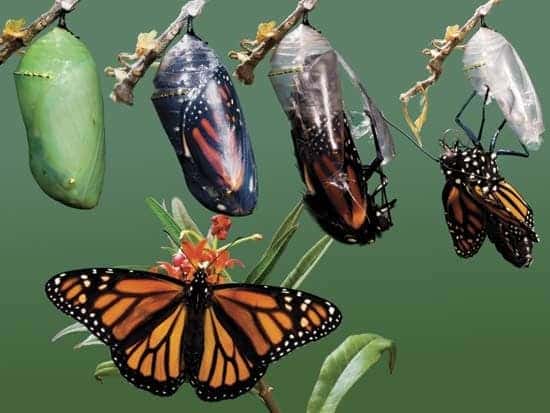Friday, 25 December 2020
Solstice Stargate Activations - The Excalibur Prophecy 21st December 2020. We come forward with this transmission to our conduit, specifically on the 20th of December 2020. We provide keys, codes and triggers which assist in catalysing the true alchemy of the soul and the fulfilment of Earth's Prophecy of Revelations at the time of the great conjunction, December solstice 2020.
Friday, 25 December 2020
Incoming Age of Aquarius Energies ~ Podcast. Explains the spectrum of depression.
riday, 25 December 2020
Incoming Age of Aquarius Energies ~ Podcast. Explains the spectrum of depression.
How caterpillars gruesomely transform into butterflies
In short, for a caterpillar to turn into a butterfly it digests itself using enzymes triggered by hormones, before sleeping cells similar to stem cells grow into the body parts of the future butterfly. So you thought puberty was mean? Wait till you read on.
The caterpillar’s metamorphosis from a tree clinging, 12-legged pest into the majestic flying butterfly is a frequent metaphor for total transformations. It’s truly a fantastic mechanism developed by nature, yet while it may seem fantastic from the outside, this transformation looks pretty gruesome deep inside the chrysalis. In short, for a caterpillar to turn into a butterfly, it digests itself using enzymes triggered by hormones. Then, sleeping cells (similar to stem cells) grow into the body parts of the future butterfly. So you thought puberty was mean? Wait till you read on.
A tough transformation

Our story begins with a hungry caterpillar who had just hatched from an egg. Soon enough, the little caterpillar (scientifically known as a larva) stuffs itself with leaves, growing little by little. When they’ve outgrown their current skin, a hormone called ecdysone is released, instructing the larva to moult. After it moults about five times, the larva stops feeding, hangs upside down from a twig or leaf, and then either spins itself a silky cocoon or molts into a shiny chrysalis. This process is driven by the same hormone, ecdysone, but this time it works in conjunction with another hormone called the juvenile hormone. It’s actually the lack of the juvenile hormone that triggers the metamorphosis mechanism.
The juvenile hormone acts to delay metamorphosis throughout the whole larva stage. It works by blocking the genes in the imaginal discs — tiny disc-shaped bags of cells that kick into action when the caterpillar wraps itself in the chrysalis, eventually turning into an antenna, eye, wing or other butterfly bit. As such, the juvenile hormone is essential to the caterpillar’s survival prior to metamorphosis. You see, once the larva reaches its final moult and begins its metamorphosis, strange things happen to its body. Cells in the larva’s muscles, gut and salivary glands are digested and act as spare parts for the soon-to-be butterfly. Each cell is programmed to self-destruct through the activation of enzymes called caspases.
The caspases tear through the cell’s proteins, releasing prime butterfly-making material. Were it not for the juvenile hormone, this could have happened at any time, killing the caterpillar. Instead, nature programmed the hormone to lower its levels at the ideal moment for metamorphosis. With less juvenile hormone around, instead of inducing a regular moult, the ecdysone now drives the caterpillar to pupate. Once a caterpillar has disintegrated all of its tissues except for the imaginal discs, those discs use the protein-rich soup surrounding them to fuel the rapid cell division required to form the wings, antennae, legs, eyes, genitals and all the other features of an adult butterfly or moth. The imaginal disc for a fruit fly’s wing, for example, might begin with only 50 cells and increase to more than 50,000 cells by the end of metamorphosis.
Metamorphosis isn’t just some beautiful physical transformation, however. It’s a stunning display of evolutionary mechanism at work. Butterflies and caterpillars don’t just look different — they behave differently, too. One lives in trees, and the other flies. Most importantly, one eats leaves, and the other solely feeds on nectar. There’s plenty of room for both kinds to coexist in the ecosystem since they don’t interfere with each other’s food stocks. It’s brilliant!
Inside the cocoon
 w.
w.
No comments:
Post a Comment
Note: only a member of this blog may post a comment.